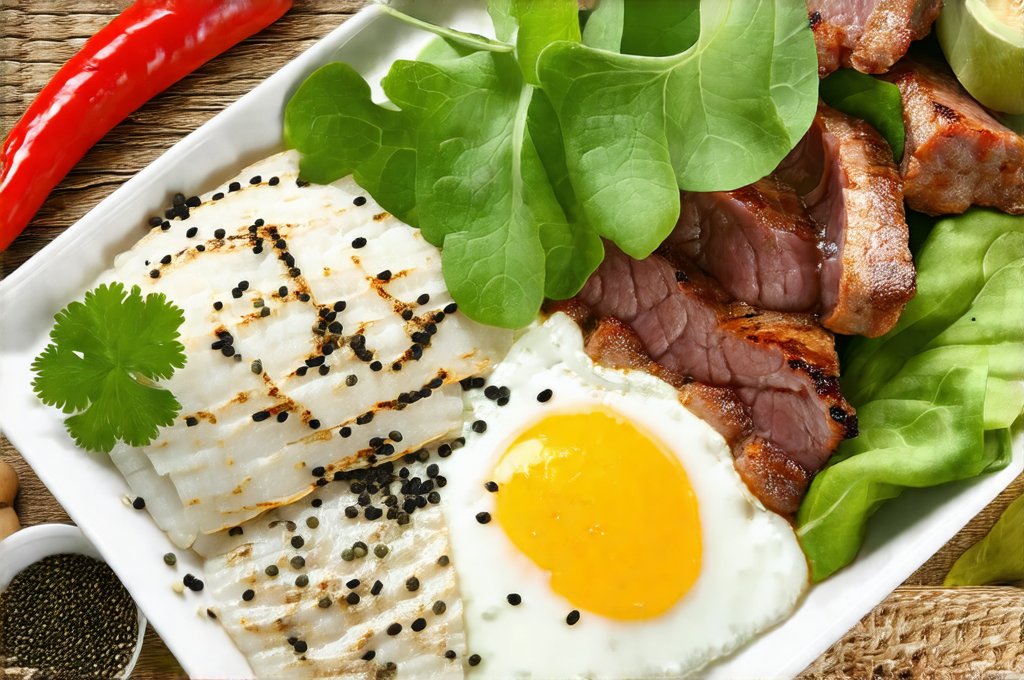Our gut is often called our “second brain,” and for good reason. It’s home to trillions of bacteria, fungi, viruses, and other microorganisms – collectively known as the gut microbiome – that play a vital role in everything from digestion and nutrient absorption to immune function and even mental health. A healthy gut microbiome is diverse and balanced, but modern diets often lack the fiber and nutrients needed to support it, leading to imbalances that can contribute to bloating, fatigue, weakened immunity, and chronic disease. Fortunately, nourishing your gut doesn’t require complicated recipes or restrictive diets. Simple changes in what you eat can have a profound impact on your well-being, and building a gut-friendly lifestyle is surprisingly accessible.
This article focuses on making gut health approachable and sustainable through easy, delicious meals prepared with minimal ingredients. We’ll explore how to create nourishing dishes using ten or fewer ingredients – focusing on whole foods that promote a thriving microbiome. The emphasis isn’t on deprivation; it’s about adding more beneficial foods to your diet while keeping things simple and enjoyable. From quick breakfasts and satisfying lunches to comforting dinners, these recipes are designed to be both gut-friendly and easy to incorporate into even the busiest lifestyles. We will also dive into understanding the core principles of a gut-healthy diet so you can continue creating nourishing meals long after reading this article. Preparing Simple Meals For People Recovering From Illness Or Digestive Strain often requires similar focus on simplicity and nutrition.
Understanding Gut Health Basics
A healthy gut isn’t about eliminating foods; it’s about cultivating a diverse ecosystem within your digestive system. The key to this is feeding the beneficial bacteria with prebiotic and probiotic rich foods. – Prebiotics are essentially food for probiotics – they’re types of fiber that our bodies can’t digest, but gut bacteria love! Good sources include garlic, onions, leeks, asparagus, bananas, oats, and apples. – Probiotics, on the other hand, are the beneficial bacteria themselves. You can get them through fermented foods like yogurt (with live cultures), kefir, sauerkraut, kimchi, kombucha, and miso.
It’s also important to remember that gut health is highly individual. What works well for one person may not work for another. Paying attention to how your body responds to different foods is crucial. Common signs of a healthy gut include regular bowel movements, minimal bloating, stable energy levels, and a strong immune system. Conversely, symptoms like frequent digestive upset, fatigue, skin problems, or mood swings could indicate an imbalance in the gut microbiome. Understanding Why Small Frequent Meals Help With Digestive Control can also aid this process.
Finally, remember that diet is only one piece of the puzzle. Other factors that influence gut health include stress management, sleep quality, physical activity, and antibiotic use. A holistic approach to well-being is essential for optimal gut function.
Simple Gut-Friendly Meal Ideas
Here are some quick and easy meal ideas utilizing under ten ingredients:
- Breakfast: Overnight oats with banana and cinnamon (oats, banana, milk/yogurt, cinnamon) – a fantastic source of prebiotic fiber.
- Lunch: Quinoa salad with chickpeas and cucumber (quinoa, chickpeas, cucumber, olive oil, lemon juice) – provides both probiotics through fermentation in the chickpea preparation and prebiotics from quinoa.
- Dinner: Baked salmon with roasted asparagus (salmon, asparagus, olive oil, lemon juice, garlic) – rich in omega-3 fatty acids which are anti-inflammatory and beneficial for gut health.
- Snack: Apple slices with almond butter – provides fiber and healthy fats.
These examples showcase how you can build a nourishing meal with minimal ingredients while prioritizing foods that support your gut microbiome. The emphasis is on whole, unprocessed foods that offer maximum nutritional benefits. Don’t be afraid to experiment with different combinations and flavors to find what you enjoy most! Remember to listen to your body and adjust accordingly. If navigating social events feels daunting, consider How to Navigate Holiday Meals With a Sensitive Stomach.
Building Blocks for Gut Health: Recipes & Tips
1. Fermented Foods Focus
Incorporating fermented foods into your diet is one of the easiest ways to boost your probiotic intake. – Homemade Sauerkraut: Cabbage, salt, and time are all you need! The fermentation process creates beneficial bacteria. Start with a small batch to see how your body tolerates it. – Kefir Smoothie: Blend kefir (a fermented milk drink) with berries and spinach for a quick and nutritious breakfast or snack. Kefir contains a wider variety of probiotic strains than yogurt. – Kimchi Fried Rice: Add kimchi to your favorite fried rice recipe for a flavorful kick and a boost of probiotics. Just be mindful of the spice level!
Fermented foods are powerful allies in gut health, but it’s important to introduce them gradually. Start with small portions and observe how your body responds. Some people may experience temporary digestive upset as their microbiome adjusts. If you have any underlying health conditions, consult with a healthcare professional before adding fermented foods to your diet. Creating a Gut-Friendly Pantry With Shelf-Stable, Low-Acid Essentials can simplify this process.
2. Fiber-Rich Foods are Your Friend
Fiber is the unsung hero of gut health. It provides food for beneficial bacteria, promotes regularity, and helps keep your digestive system running smoothly. – Lentil Soup: Lentils are an excellent source of fiber and protein. A simple lentil soup with carrots, celery, and onion can be a comforting and nourishing meal. – Sweet Potato & Black Bean Bowls: Sweet potatoes offer prebiotic fiber while black beans provide both fiber and protein. Top with avocado for healthy fats. – Oatmeal with Berries: Oatmeal is another fantastic source of soluble fiber. Add berries for extra antioxidants and flavor.
Aim to include a variety of fiber-rich foods in your diet, including fruits, vegetables, whole grains, legumes, nuts, and seeds. Gradually increase your fiber intake to avoid digestive discomfort. Drinking plenty of water is also essential to help move fiber through your digestive system. For those dealing with more acute issues, building a nausea-safe grocery list can be extremely helpful.
3. Hydration & Mindful Eating
Don’t underestimate the power of hydration! Water helps keep things moving along in your digestive system and supports the growth of beneficial bacteria. – Infused Water: Add slices of cucumber, lemon, or ginger to your water for a refreshing and hydrating beverage. – Herbal Tea: Sip on herbal tea throughout the day to stay hydrated and soothe your digestive system. Peppermint and chamomile are particularly helpful for reducing bloating.
Mindful eating is also crucial. Take time to savor your food, chew thoroughly, and pay attention to how your body feels. Eating in a relaxed state promotes better digestion and absorption of nutrients. Avoid distractions like screens or stressful conversations while you’re eating. Remember that gut health isn’t just about what you eat; it’s also about how you eat. If you’re looking for low-effort meals for days with digestive issues, simplicity is key! And finally, consider building gut-friendly bowls with balanced macros and minimal irritants to maximize the benefits of each meal.


















